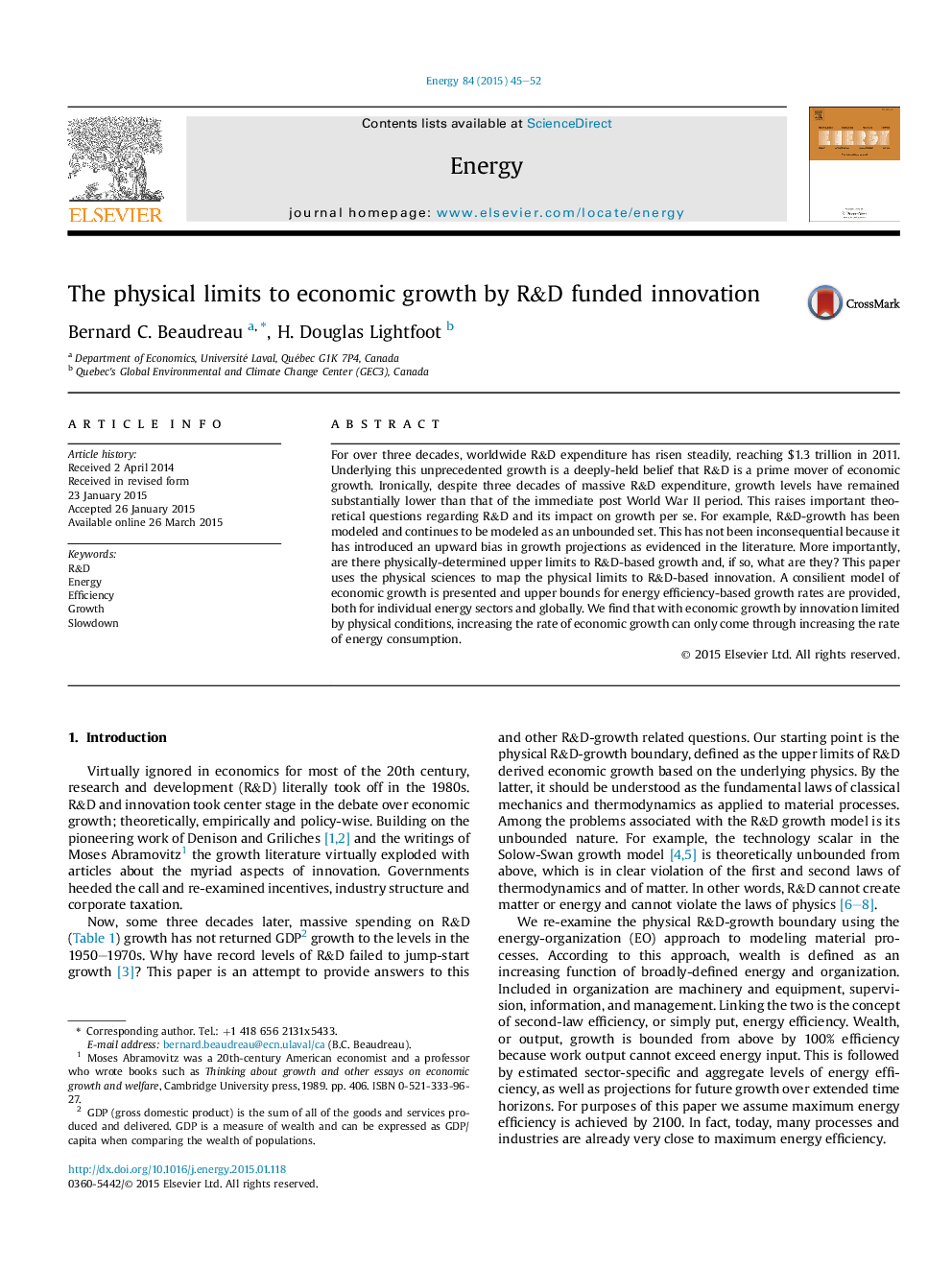| کد مقاله | کد نشریه | سال انتشار | مقاله انگلیسی | نسخه تمام متن |
|---|---|---|---|---|
| 1732285 | 1521462 | 2015 | 8 صفحه PDF | دانلود رایگان |
• Worldwide, R&D expenditures have grown steadily yet economic growth remains anemic.
• This paper examines the physics of process-based R&D using a consilient model of wealth creation.
• Growth is formalized in terms of (i) energy consumption growth and (ii) changes in energy efficiency.
• Detailed estimates of changes in energy efficiency are provided for the period 1990–2100.
• The results of the paper establish the upper bound of changes in energy efficiency at 0.68 percent per year.
For over three decades, worldwide R&D expenditure has risen steadily, reaching $1.3 trillion in 2011. Underlying this unprecedented growth is a deeply-held belief that R&D is a prime mover of economic growth. Ironically, despite three decades of massive R&D expenditure, growth levels have remained substantially lower than that of the immediate post World War II period. This raises important theoretical questions regarding R&D and its impact on growth per se. For example, R&D-growth has been modeled and continues to be modeled as an unbounded set. This has not been inconsequential because it has introduced an upward bias in growth projections as evidenced in the literature. More importantly, are there physically-determined upper limits to R&D-based growth and, if so, what are they? This paper uses the physical sciences to map the physical limits to R&D-based innovation. A consilient model of economic growth is presented and upper bounds for energy efficiency-based growth rates are provided, both for individual energy sectors and globally. We find that with economic growth by innovation limited by physical conditions, increasing the rate of economic growth can only come through increasing the rate of energy consumption.
Journal: Energy - Volume 84, 1 May 2015, Pages 45–52
